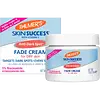What's inside
What's inside
 Key Ingredients
Key Ingredients

 Benefits
Benefits

 Concerns
Concerns

 Ingredients Side-by-side
Ingredients Side-by-side

Water
Skin ConditioningGlyceryl Stearate
EmollientParaffinum Liquidum
EmollientNiacinamide
SmoothingPropylene Glycol
HumectantStearyl Stearate
EmollientCetearyl Alcohol
EmollientPEG-75 Lanolin
EmollientPEG-100 Stearate
Dimethicone
EmollientCeteareth-20
CleansingIsopropyl Myristate
EmollientRetinol
Skin ConditioningTricholoma Matsutake Extract
Skin ConditioningAscorbyl Glucoside
AntioxidantTocopheryl Acetate
AntioxidantEthylhexyl Salicylate
UV AbsorberLeuconostoc/Radish Root Ferment Filtrate
AntimicrobialCitric Acid
BufferingDisodium EDTA
Butylene Glycol
HumectantMagnesium Aluminum Silicate
AbsorbentXanthan Gum
EmulsifyingCaprylic/Capric Triglyceride
MaskingSodium Sulfite
PreservativeSodium Metabisulfite
AntioxidantSodium Lauryl Sulfate
CleansingSodium Sulfate
BHT
AntioxidantEthylhexylglycerin
Skin ConditioningMethoxyethanol
SolventParfum
MaskingCitronellol
PerfumingHydroxycitronellal
PerfumingButylphenyl Methylpropional
PerfumingLinalool
PerfumingLimonene
PerfumingAlpha-Isomethyl Ionone
PerfumingWater, Glyceryl Stearate, Paraffinum Liquidum, Niacinamide, Propylene Glycol, Stearyl Stearate, Cetearyl Alcohol, PEG-75 Lanolin, PEG-100 Stearate, Dimethicone, Ceteareth-20, Isopropyl Myristate, Retinol, Tricholoma Matsutake Extract, Ascorbyl Glucoside, Tocopheryl Acetate, Ethylhexyl Salicylate, Leuconostoc/Radish Root Ferment Filtrate, Citric Acid, Disodium EDTA, Butylene Glycol, Magnesium Aluminum Silicate, Xanthan Gum, Caprylic/Capric Triglyceride, Sodium Sulfite, Sodium Metabisulfite, Sodium Lauryl Sulfate, Sodium Sulfate, BHT, Ethylhexylglycerin, Methoxyethanol, Parfum, Citronellol, Hydroxycitronellal, Butylphenyl Methylpropional, Linalool, Limonene, Alpha-Isomethyl Ionone
Sodium Tallowate
CleansingSodium Palm Kernelate
CleansingWater
Skin ConditioningGlycerin
HumectantLanolin
EmollientParfum
MaskingTocopheryl Acetate
AntioxidantAscorbic Acid
AntioxidantGlycyrrhiza Glabra Root Extract
BleachingGlycine Soja Oil
EmollientSodium Chloride
MaskingPentasodium Pentetate
Tetrasodium Etidronate
Emulsion StabilisingCI 77891
Cosmetic ColorantCitronellol
PerfumingLimonene
PerfumingHexyl Cinnamal
PerfumingHydroxycitronellal
PerfumingLinalool
PerfumingSodium Tallowate, Sodium Palm Kernelate, Water, Glycerin, Lanolin, Parfum, Tocopheryl Acetate, Ascorbic Acid, Glycyrrhiza Glabra Root Extract, Glycine Soja Oil, Sodium Chloride, Pentasodium Pentetate, Tetrasodium Etidronate, CI 77891, Citronellol, Limonene, Hexyl Cinnamal, Hydroxycitronellal, Linalool
Ingredients Explained
These ingredients are found in both products.
Ingredients higher up in an ingredient list are typically present in a larger amount.
Citronellol is used to add fragrance/parfum to a product. It is often derived from plants such as roses. In fact, it can be found in many essential oils including geranium, lavender, neroli, and more. The scent of Citronellol is often described as "fresh, grassy, and citrus-like".
Since the Citronellol molecule is already unstable, Citronellol becomes irritating on the skin when exposed to air.
Citronellol is a modified terpene. Terpenes are unsaturated hydrocarbons found in plants. They make up the primary part of essential oils.
Citronellol is not able to be absorbed into deeper layers of the skin. It has low permeability,
Citronellol is also a natural insect repellent.
Learn more about CitronellolHydroxycitronellal is a fragrance created from citronellal. The smell of hydroxycitronellal is often described as "citrus-like" or "melon-like".
Hydroxycitronellal is a known EU allergen and may cause irritation when applied to the skin.
Limonene is a fragrance that adds scent and taste to a formulation.
It's found in the peel oil of citrus fruits and other plants such as lavender and eucalyptus. The scent of limonene is generally described as "sweet citrus".
Limonene acts as an antioxidant, meaning it helps neutralize free radicals.
When exposed to air, oxidized limonene may sensitize the skin. Because of this, limonene is often avoided by people with sensitive skin.
The term 'fragrance' is not regulated in many countries. In many cases, it is up to the brand to define this term. For instance, many brands choose to label themselves as "fragrance-free" because they are not using synthetic fragrances. However, their products may still contain ingredients such as essential oils that are considered a fragrance.
Learn more about LimoneneLinalool is a fragrance and helps add scent to products. It's derived from common plants such as cinnamon, mint, citrus, and lavender.
Like Limonene, this ingredient oxidizes when exposed to air. Oxidized linalool can cause allergies and skin sensitivity.
This ingredient has a scent that is floral, spicy tropical, and citrus-like.
Learn more about LinaloolParfum is a catch-all term for an ingredient or more that is used to give a scent to products.
Also called "fragrance", this ingredient can be a blend of hundreds of chemicals or plant oils. This means every product with "fragrance" or "parfum" in the ingredients list is a different mixture.
For instance, Habanolide is a proprietary trade name for a specific aroma chemical. When used as a fragrance ingredient in cosmetics, most aroma chemicals fall under the broad labeling category of “FRAGRANCE” or “PARFUM” according to EU and US regulations.
The term 'parfum' or 'fragrance' is not regulated in many countries. In many cases, it is up to the brand to define this term.
For instance, many brands choose to label themselves as "fragrance-free" because they are not using synthetic fragrances. However, their products may still contain ingredients such as essential oils that are considered a fragrance by INCI standards.
One example is Calendula flower extract. Calendula is an essential oil that still imparts a scent or 'fragrance'.
Depending on the blend, the ingredients in the mixture can cause allergies and sensitivities on the skin. Some ingredients that are known EU allergens include linalool and citronellol.
Parfum can also be used to mask or cover an unpleasant scent.
The bottom line is: not all fragrances/parfum/ingredients are created equally. If you are worried about fragrances, we recommend taking a closer look at an ingredient. And of course, we always recommend speaking with a professional.
Learn more about ParfumTocopheryl Acetate is AKA Vitamin E. It is an antioxidant and protects your skin from free radicals. Free radicals damage the skin by breaking down collagen.
One study found using Tocopheryl Acetate with Vitamin C decreased the number of sunburned cells.
Tocopheryl Acetate is commonly found in both skincare and dietary supplements.
Learn more about Tocopheryl AcetateWater. It's the most common cosmetic ingredient of all. You'll usually see it at the top of ingredient lists, meaning that it makes up the largest part of the product.
So why is it so popular? Water most often acts as a solvent - this means that it helps dissolve other ingredients into the formulation.
You'll also recognize water as that liquid we all need to stay alive. If you see this, drink a glass of water. Stay hydrated!
Learn more about Water